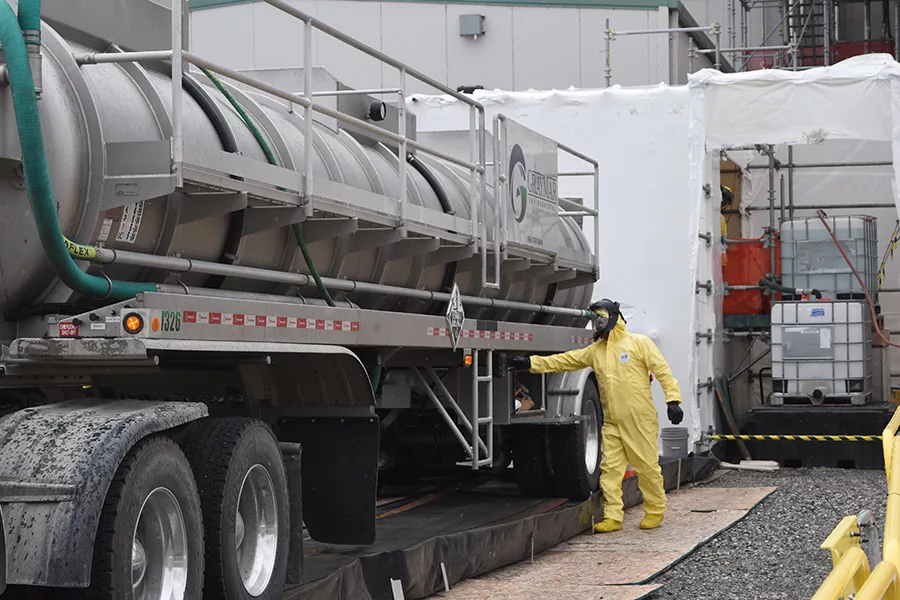
Home » Vit plant cold commissioning moves forward
Hanford
Vit plant cold commissioning moves forward

A worker assists with offloading nitrogen from a tanker truck at the Waste Treatment and Immobilization Plant, commonly known as the vit plant, at the Hanford site. The chemical was recently introduced into the plant’s melter to simulate the tank waste that it is expected to start turning into a stable glass form for long-term storage.
Courtesy Bechtel National Inc.May 27, 2025
Workers at the Hanford site vitrification plant have begun introducing chemicals akin to tank waste into the facility’s melter in the latest step to test its systems ahead of full-scale operations.
The U.S. Department of Energy (DOE) has a goal to begin solidifying tank waste into glass via vitrification later this year. Introducing the chemicals – which produce ammonia and nitrous oxide – as part of the cold commissioning process will allow workers to verify the facility runs smoothly and safely before actual nuclear waste is introduced.
“Our progress in cold commissioning is the result of decades of preparation, dedication, and collaboration between the (DOE) and our contractor partners and is another step toward safely addressing Hanford tank waste,” said Brian Harkins, DOE’s Hanford Field Office’s acting manager, in a statement.
There are 177 underground tanks holding 56 million gallons of toxic and nuclear hazardous waste on the Hanford site, a legacy of the site’s role in developing material for the U.S. nuclear weapon arsenal.
Bechtel is the lead contractor on the design and construction of the vit plant, which is the world’s largest nuclear waste treatment facility.
The plant will process an average of 5,300 gallons of tank waste per day once it is fully operational, mixing treated waste with glass-forming materials, heating it to 2,100 degrees Fahrenheit, and pouring it into stainless-steel containers for long-term disposal. Approximately 3.5 containers, weighing a total of 21 metric tons, will be produced each day.
“Leadership from DOE and strong partnerships with the trade unions, suppliers, regulators, other Hanford contractors, and local community have helped make this happen,” said Brian Hartman, Bechtel’s project director and senior vice president, in a statement. “We’re proud to be part of a mission that’s critical to the health of our community and the environment.”
Latest News Hanford
KEYWORDS May 2025
Related Articles
Related Products





